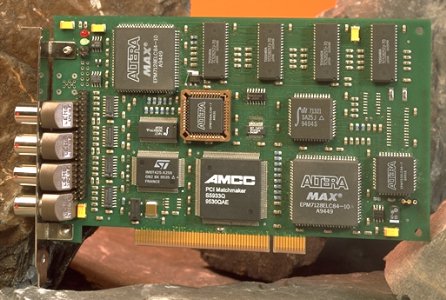"…sequential computers are approaching a fundamental physical
limit on their potential power. Such a limit is the speed of light…"
![]()

|
|
Transputers are able to communicate via each of its links at full speed without any significant loss of performance. However, transputer links connected to ISA based PCs use a significant proportion of the host CPUs computational power, even if running at suboptimal transfer rates. The BBK-PCI is designed to eliminate this bottleneck and offers additional benefits by taking advantage of the PCI bus.
Incorporating a T425 transputer as a controller, the BBK-PCI acts in busmaster DMA mode as communication coprocessor to the host, which delivers multiple tasks to the link interface via its on-board dual-ported memory and leaves the actual data transmission to BBK-PCI. Whenever the transputer is ready to process the next communication task, the bus interface hardware acquires the control over the PCI bus. It transfers a block of data between link and host memory before releasing the bus control. In the meantime the host processor is free to do its own job. This optimized handling guarantees the transfer rate to be close to the limit of four saturated OS links.
Even if the host applications do not require such high transfers rates, another benefit of the BBK-PCI is the ability to connect multiple links to multiple host processes. In LAN environments, for example, one or more users can connect themselves to links over the network.
|
This page is copyright ©1995, Sundance Multiprocessor Technology Ltd.